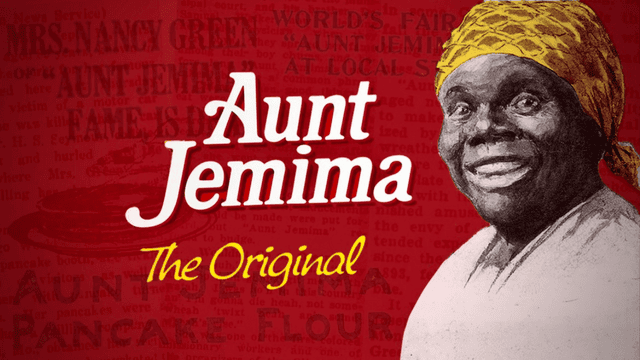After years of criticism, Pepsi Co. removed the Aunt Jemima name for being a racial slur on Black women and for perpetuating racist stereotypes, such as the “mammy” character. The contentious Quaker Oats Firm, owned by the same company that produces popular pancake mix and syrups, changed its name to “Pearl Milling Company” on Tuesday.
According to a news release, the general public will soon be able to purchase Pearl Milling Company’s pancake mixes, syrups, cornmeal, flour, and grits. Just look for the new Pearl Milling Company emblem on the container; the contents and packaging are otherwise unchanged.
According to PepsiCo, the brand’s new name is inspired by the company’s rich heritage. The Pearl Milling Company first opened its doors for business in St. Joseph, Missouri, in 1888. That’s where the famous Aunt Jemima pancake mix was created. The new brand, the business claims, was developed with input from a wide range of people, including consumers, workers, outside cultural and subject-matter experts, and “diverse agency partners.”
Who is Aunt Jemima Based on?
The Aunt Jemima website claims that the character was “brought to life” by Nancy Green, a “storyteller, cook, and missionary worker” recruited to promote the pancake mix and syrup.
Old Aunt Jemima is where the name of the brand came from, though. The African American Registry claims that in 1889, Rutt saw a vaudeville performance of “Aunt Jemima” including an actor in blackface who wore an apron and a bandanna on his head. (AAREG). Apparently, slaves also sang this song, as reported by CNN. When Rutt heard the song, they knew exactly what they had to call their pancake flour: Aunt Jemima.
Nancy Green Meets Aunt Jemima
Davis, who’d been in the flour industry for half a century, not only had the means to upgrade the Aunt Jemima recipe but also the marketing savvy to sell it successfully. To spread the word about his Aunt Jemima Pancake Mix, r.T. Davis brought the character of Aunt Jemima to life. He “Manring Typed” both the mommy market and the mass market.

In 1890, after merging his company with The Pearl Milling Co., Davis put out a casting call for a gregarious, flamboyant Black woman to prepare pancake mix for large demonstrations. Nancy Green, a 59-year-old secretary for a judge in Chicago, was the one who stepped up to the plate.
Green’s family was a slaveholding one in Montgomery County, Kentucky. Davis Wanted Someone Who Could Cook Well And Keeps the Party Going. In 1893, she made her debut at the World’s Columbian Exposition in Chicago.
Green’s cubicle resembled a large flour barrel. She flipped pancakes while singing and reminiscing about her time as a slave. She became well-known, and the World’s Fair awarded her a medal because of it.
Davis and later Quaker Oats reaped financial benefits from Green’s personification of Aunt Jemima and the myths that advertising executives concocted about her. However, a Professor of African American Studies at the University of California, Los Angeles, Patricia A. Turner informed the Associated Press that she has seen “no evidence” that Green actually received any of the money.
Read More: Who is Edna Mode Based on? Is Edna Inspired by Hollywood Legend Edith Head?
Investigating Nancy Green’s Background
Williams stated that she became aware of the colour green when she began working as a community historian in the Bronzeville neighbourhood, despite having grown up seeing the Aunt Jemima trademark in a variety of colours.
Williams claimed that she developed an interest in Green after reading about his exploits in Chicago newspapers. Green was born into slavery in Montgomery County, Kentucky, in 1834, according to his obituary published in The Chicago Defender in 1923. She later relocated to Chicago, where she worked as a nurse and carer for the prominent Walker family.
Williams discovered an obituary for Green in The Sunday Morning Star, one of many that mention his role in developing the Aunt Jemima pancake mix. According to Green’s obituary, he cooked pancakes for the Walker Brothers. After trying Green’s renowned pancakes, the Walker brothers raved about them to their pals.
After hearing this, the Aunt Jemima Manufacturing Company hired Green to represent the company at the 1893 World’s Fair by making pancakes and acting like the company’s namesake.
Related:
- Who is Dirty Diana Based on? What Did Michael Jackson Say About It?
- Who is Dr Death Based on? Who is Christopher Duntsch?
After the Expo, Green was offered a lifetime contract with the Pancake Company. Travelling the country on promotional tours, she was struck by a car on 46th Street and died at age 89.
Finding the Grave of Nancy Green
Williams claimed that after researching Green’s life, she became resolved to locate the deceased’s grave and erect a headstone. African-Americans often pay a visit to cemeteries. Sometimes We Have Picnics at Cemeteries. “Out of all the famous people buried in Chicago’s cemeteries for whom I’d like to put a headstone, Nancy Green is the person I’d like to honour the most,” Williams said. “We have a tradition called Decoration Day for the Graves.”
Williams claimed that she had used Green’s date of death to locate his unmarked grave at Oak Woods Cemetery.



Comments are closed.